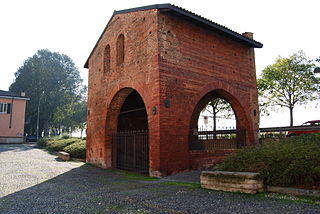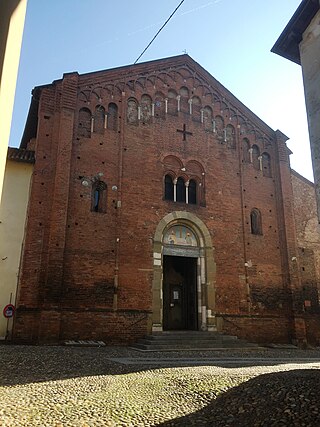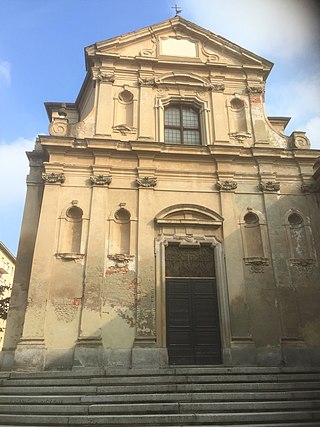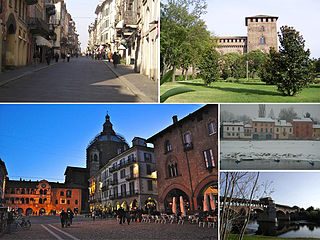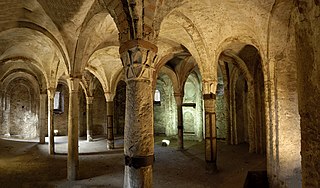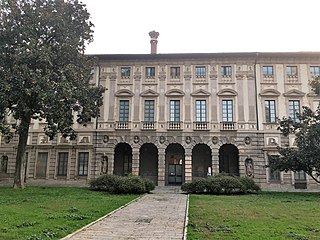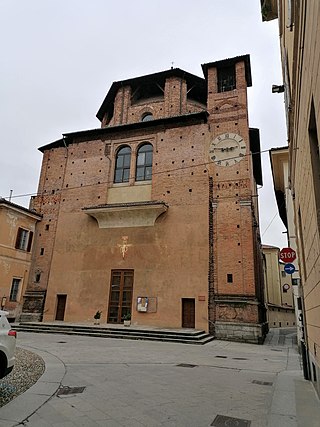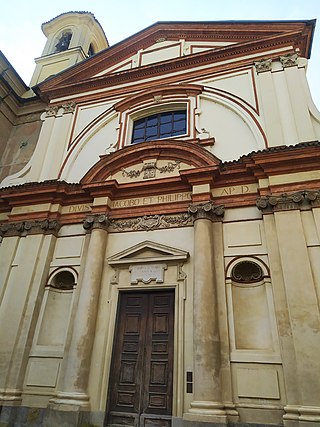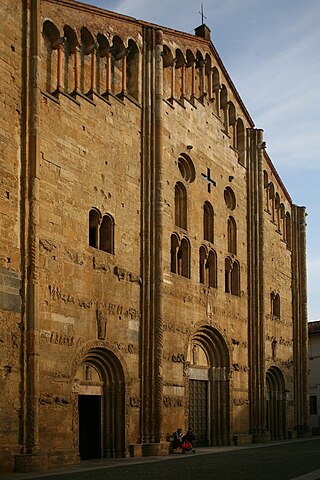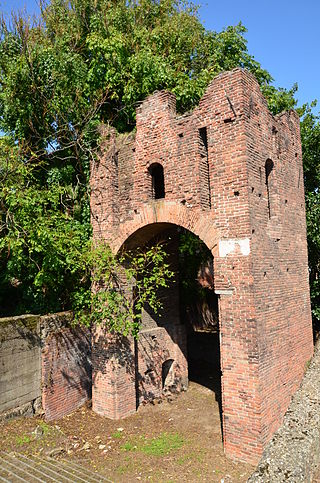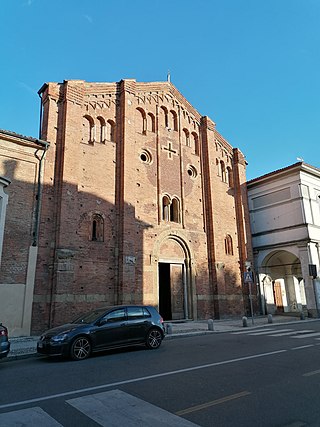Self-guided Sightseeing Tour #4 in Pavia, Italy
Legend
Tour Facts
4.2 km
74 m
Experience Pavia in Italy in a whole new way with our free self-guided sightseeing tour. This site not only offers you practical information and insider tips, but also a rich variety of activities and sights you shouldn't miss. Whether you love art and culture, want to explore historical sites or simply want to experience the vibrant atmosphere of a lively city - you'll find everything you need for your personal adventure here.
Activities in PaviaIndividual Sights in PaviaSight 1: Porta Nuova
Porta Nuova is one of the ancient gates that opened in the walls of Pavia. It overlooked the Ticino in correspondence with the current Piazza di Porta Nuova.
Sight 2: Chiesa dei Santi Primo e Feliciano
Santi Primo e Feliciano is a Romanesque-style Roman Catholic church in the town center of Pavia, Italy.
Sight 3: Orto Botanico
The Orto Botanico dell'Università di Pavia also known as the Orto Botanico di Pavia, is a botanical garden maintained by the University of Pavia. It is located at Via S. Epifanio, 14, Pavia, Italy, and is open to the public on weekends. The botanical garden covers an area of about two hectares and has approximately two thousand different species of plants, which are organised in sections. The current director is Francesco Sartori.The Botanical Garden stands in the place where the church of Saint Epiphanius was located, of which it preserves the cloister of the 15th century.
Sight 4: Monastero di santa Maria delle Cacce
The monastery of Santa Maria delle Cacce is located in Pavia near the Spanish Walls.
Sight 5: Torre dell'Orologio
Pavia is a town and comune of south-western Lombardy, in Northern Italy, 35 kilometres south of Milan on the lower Ticino near its confluence with the Po. It has a population of c. 73,086.
Sight 6: Cripta di San Eusebio
The church of Sant'Eusebio was a church of Pavia, of which today only the crypt remains. The church was probably built by the Lombard king Rothari (636-652) as the city's Arian cathedral. It later became the fulcrum of the conversion to Catholicism of the Lombards initiated by Theodolinda and the monks of San Colombano and which later received, precisely in Pavia, a great impulse from King Aripert I (653-661) and from Bishop Anastasius.
Sight 7: Palazzo Del Maino
Palazzo del Maino is a Baroque palace in Pavia, in Lombardy.
Sight 8: Chiesa di Santa Maria Incoronata di Canepanova
Santa Maria di Canepanova is a Renaissance-style Roman Catholic church located in central Pavia, region of Lombardy, Italy. Although in the past the design was popularly attributed to Bramante, the church was designed by Giovanni Antonio Amadeo.
Sight 9: Santi Giacomo e Filippo
San Giacomo e Filippo is a Baroque-style Roman Catholic church in the town center of Pavia, Italy.
Sight 10: Basilica di San Michele Maggiore
The Basilica of San Michele Maggiore is a Roman Catholic church in Pavia, region of Lombardy, Italy. The building, dating to the 11-12th centuries, is a well-preserved example of the Lombard-Romanesque style.
Sight 11: Porta Calcinara
Porta Calcinara is one of the many gates of the ancient city walls of Pavia, overlooking the Ticino and still located today along the Lungoticino Visconti.
Sight 12: Santa Maria in Betlem
The church of Santa Maria in Betlem, founded around 1130, stands in the characteristic district of the Borgo of Pavia, located, after the Ponte Coperto, on the other bank of the Ticino river from the city center.
Share
How likely are you to recommend us?
Disclaimer Please be aware of your surroundings and do not enter private property. We are not liable for any damages that occur during the tours.
GPX-Download For navigation apps and GPS devices you can download the tour as a GPX file.
